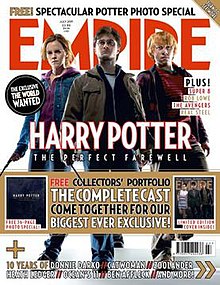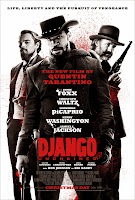Narrative is defined as "a chain of events in a cause-effect relationship occurring in time" (Bordwell & Thompson, Film Art 1980)
Narrative is categorized into these sub categories:
Diegesis
The internal world created by the story that the characters themselves experience
and encounter.
Story and plot
Story – all events referenced both explicitly in a narrative and inferred (including
backstory as well as those projected beyond the action)
Plot – the events directly incorporated into the action of the text and the order in
which they are presented
Narrative Range
Unrestricted narration – A narrative which has no limits to the information that is
presented i.e. a news bulletin.
Restricted narration – only offers minimal information regarding the narrative i.e.
Thrillers
Narrative Depth
Subjective character identification – the viewer is given unique access to what a range of characters see and do
Objective character identification – the viewer is given unique access to a
character’s point of view such as seeing things from the character’s mind, dreams,
fantasies or memories
then it can be more complex:
Modular Narratives “articulate a sense of time as divisible and subject to manipulation”.
Cameron has identified four different types of modular narrative:
• Anachronic
• Forking Paths
• Episodic
• Split Screen
Anachronic modular narratives involve the use of flashbacks and/or flash forwards, with no clear dominance between any of the narrative threads. These narratives also often repeat scenes directly or via a different perspective. Examples of this narrative include films like:
Pulp Fiction
This is a good example of anachronic narratives as the plot within the film is spread out into 7 stories that show characters in different forms of importance:
- "Prologue—The Diner" (i)
- Prelude to "Vincent Vega and Marsellus Wallace's Wife"
- "Vincent Vega and Marsellus Wallace's Wife"
- Prelude to "The Gold Watch" (a—flashback, b—present)
- "The Gold Watch"
- "The Bonnie Situation"
- "Epilogue—The Diner" (ii)
The sequences are all shown in non chronological order so the audience is left to piece together the events. This is a running style within Quentin Tarantino's other works.
Eternal Sunshine of the Spotless Mind
Another example of this narrative technique is shown in the Jim Carrey film Eternal Sunshine of the Spotless Mind.
The plot is quite simplistic as it uses the romantic comedy formula but twists it with how the events are shown. The audience is shown the back-story of the romance between the leads through flashbacks that take place in memories in non chronological order as they are being deleted. The audience again have to piece the events together.
In similar terms this method could be described as mixing up time within the film, this could be done with flashbacks/forwards.
Forking-path narratives juxtapose alternative versions of a story, showing the possible outcomes that might result from small changes in a single event or group of events. The forking-path narrative introduces a number of plot lines that usually contradict one another.
A good example of this narrative is shown in the Bill Murray comedy film Groundhog Day.
In the film Bill Murray's character finds himself stuck within a time loop repeating the same day again and again. After indulging numerous suicide attempts he begins to re-evaluate his life.
The events that play out are the same but each time there is a different outcome which changes the events and outlook of the character significantly.
In similar terms this method could be described as showing different versions of an event.
Episodic narratives are organised as an abstract series or narrative anthology.Abstract series type of modular narrative is characterized by the operation of a non-narrative formal system which appears to dictate (or at least overlay) the organization of narrative elements such as a sequence of numbers or the alphabet. Anthology consists of a series of shorter tales which are apparently disconnected but share a random similarity, such as all ‘episodes’ being survivors of a shipwreck.
An example of this narrative could be the film:
Sin City
This could be seen as an example of episodic narrative as the story is told from many perspectives with other main characters seen in other sequences, such as one main character dies early in the film is then seen in a new sequence looking at another main character.
Sin City can also be used as an example for anachronic narrative.
A scene from the Quentin Tarantino film Death Proof I found is a good example of this narrative as it shows the antagonist killing 4 women but the deaths are shown from each point of view:
In similar terms this method can be done by starting from a central point and then show it from a different perspective (broken into bits).
Split screen narratives are different from the other types of modular narrative discussed here, because their modularity is articulated along spatial rather than temporal lines. These films divide the screen into two or more frames, juxtaposing events within the same visual field, in a sustained fashion. Examples include the expectations and reality scene in the film 500 Days of Summer:
This shows the audience the playing of events but shown from two possible versions of the same events this can also be used as an example for forking path narratives.
In similar terms this can be articulated through the screen.
 The magazine I have chosen to print my film review in is Empire magazine. Empire is a British film magazine published monthly by Bauer Consumer Media.From the first issue in July 1989, the magazine was edited by Barry McIlheney and
published by Emap.Bauer purchased Emap Consumer Media in early 2008. It is the
biggest selling film magazine in the United Kingdom and is also published in the United States, Australia, Turkey, Russia and Portugal. Empire
organises the annual Empire Awards which were sponsored by Sony Ericsson , and from 2009 sponsored by Jameson. The awards are voted
for by readers of the magazine.
The magazine I have chosen to print my film review in is Empire magazine. Empire is a British film magazine published monthly by Bauer Consumer Media.From the first issue in July 1989, the magazine was edited by Barry McIlheney and
published by Emap.Bauer purchased Emap Consumer Media in early 2008. It is the
biggest selling film magazine in the United Kingdom and is also published in the United States, Australia, Turkey, Russia and Portugal. Empire
organises the annual Empire Awards which were sponsored by Sony Ericsson , and from 2009 sponsored by Jameson. The awards are voted
for by readers of the magazine.

















